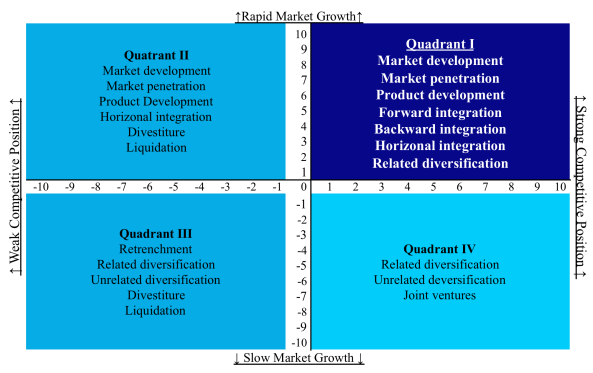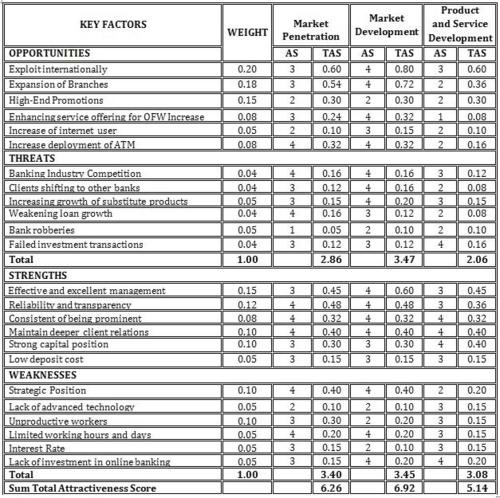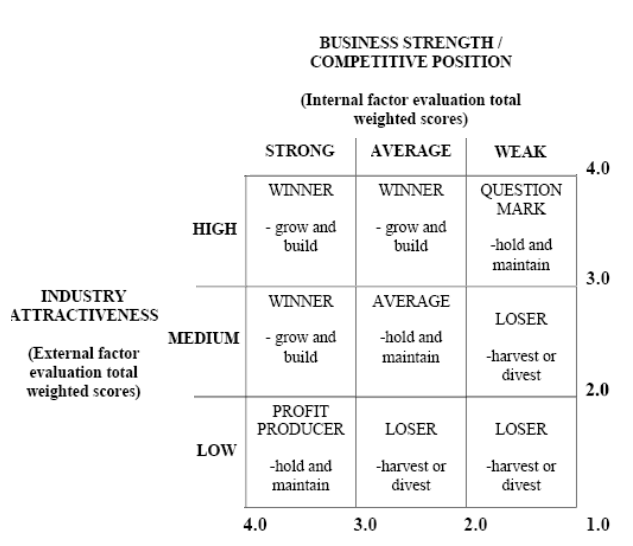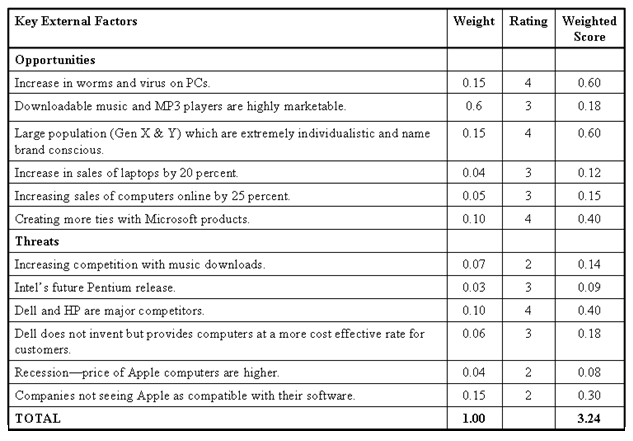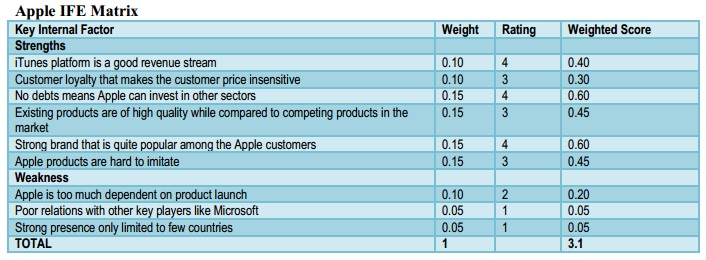The Grand Strategy Matrix has become a popular tool for formulating feasible strategies, along with the SWOT Analysis, SPACE Matrix, BCG Matrix, and IE Matrix. Grand strategy matrix is the instrument for creating alternative and different strategies for the organization. All companies and divisions can be positioned in one of the Grand Strategy Matrix’s four strategy quadrants. The Grand Strategy Matrix is based on two dimensions: competitive position and market growth. Data needed for positioning SBUs in the matrix is derived from the portfolio analysis. This matrix offers feasible strategies for a company to consider which are listed in sequential order of attractiveness in each quadrant of the matrix. Quadrant I (Strong Competitive Position and Rapid Market Growth) – Firms located in Quadrant I of the Grand Strategy Matrix are in an excellent strategic position. The first quadrant refers to the firms or divisions with strong competitive base and operatingContinue reading
Strategic Management Tools
The Competitive Profile Matrix (CPM)
The Competitive Profile Matrix (CPM) identifies a firm’s major competitors and their particular strengths and weaknesses in relation to a sample firm’s strategic position. The Competitive Profile Matrix resembles an External Factor Evaluation (EFE) Matrix with a comparison to other organizations and/or companies. The weights and total weighted scores in both a CPM and EFE have the same meaning. However, the factors in a CPM include both internal and external issues; therefore, the ratings refer to strengths and weaknesses, where 4 = major strength, 3 = minor strength, 2 = minor weakness, and 1 = major weakness. There are some important differences between the EFE and CPM. First of all, the critical success factors in a CPM are broader; they do not include specific or factual data and even may focus on internal issues. The critical success factors in a CPM also are not grouped into opportunities and threats suchContinue reading
Quantitative Strategic Planning Matrix (QSPM)
Quantitative Strategic Planning Matrix (QSPM) is a strategic management tool used in the evaluation of strategic options and determination of relative attractiveness of strategies. The QSPM technique determines which of the selected strategic options is feasible, and it actually prioritizes these strategies. A basic tenet of the QSPM is that firms need to systematically assess their external and internal environments, conduct research, carefully evaluate the pros and cons of various alternatives, perform analyses, and then decide upon a particular course of action. The Quantitative Strategic Planning Matrix (QSPM) consists of three stages that are used in the strategies formulation process. The first step is to define key strategic factors. Then, once this has been determined, a SWOT analysis, or other similar form of analysis, is performed to objectively weigh the pros and cons of each strategic factor in numerical form. Finally, based on the information found in the analysis, aContinue reading
Internal-External (IE) Matrix
The Internal-External (IE) Matrix positions an organization’s various divisions in a nine cell matrix. The IE Matrix is a strategic management tool which is used to analyze the current position of the divisions and suggest the strategies for the future. The Internal-External (IE) Matrix is based on an analysis of internal and external business factors which are combined into one suggestive model. The IE matrix is a continuation of the EFE matrix and IFE matrix models. The Internal-External (IE) Matrix is based on two key dimensions: the IFE total weighted scores on the x €‘axis and the EFE total weighted scores on the y axis. Recall that each division of an organization should construct an IFE Matrix and an EFE Matrix for its part of the organization. The total weighted scores derived from the divisions allow construction of the corporate-level IE Matrix. On the x €‘axis of the IE Matrix, anContinue reading
External Factor Evaluation (EFE) Matrix
An External Factor Evaluation (EFE) Matrix allows strategists to summarize and evaluate economic, social, cultural, demographic, environmental, political, governmental, legal, technological, and competitive information. EFE Matrix indicates whether the firm is able to effectively take advantage of existing opportunities along with minimizing the external threats. Similarly, it will help the strategists to formulate new strategies and policies on the basis of existing position of the company. External factors are extracted after deep internal analysis of external environment. Obviously there are some good and some bad for the company in the external environment. That’s the reason external factors are divided into two categories opportunities and threats. Opportunities are the chances exist in the external environment, it depends firm whether the firm is willing to exploit the opportunities or may be they ignore the opportunities due to lack of resources. Threats are always evil for the firm, minimum no of threats inContinue reading
Internal Factor Evaluation (IFE) Matrix
An Internal Factor Evaluation (IFE) Matrix is a strategy formulation tool that summarizes and evaluates the major strengths and weaknesses in the functional areas of a business, and it also provides a basis for identifying and evaluating relationships among those areas. Intuitive judgments are required in developing an IFE Matrix, so the appearance of a scientific approach should not be interpreted to mean this is an all €‘powerful technique. A thorough understanding of the factors included is more important than the actual numbers. An Internal Factor Evaluation (IFE) Matrix can be developed in five steps: List key internal factors as identified in the internal €‘audit process. Use a total of from ten to twenty internal factors, including both strengths and weaknesses. List strengths first and then weaknesses. Be as specific as possible, using percentages, ratios, and comparative numbers. Assign a weight that ranges from 0.0 (not important) to 1.0 (allContinue reading
